Medals and War Badges:
|
|
The total number of 1914 Stars, 1914/15 Stars,
British War Medals and Victory Medals issued amounts to some 14,778,805
and every medal was individually stamped with the name, rank and serial
number of the soldier they were awarded too. This is in contrast to the
medals of the 2nd World War which were issued unnamed. Shown here are
some of the medals and badges awarded and issued in the 1st World War to
both soldiers and civilians, some of which form part of my medal and war
badge collection. |
The 1914 "Mons" Star::
|
|
In addition to the Victory Medal, British
Medal and the 1914/15 Star there was also the
1914 Star. This medal was issued
to members of the British Expeditionary Force who had served in France
and Belgium during the period the 5th August to the 22nd November.
In 1919 a clasp bearing those dates
was authorised and given to those individuals who had actually been
under fire between the prescribed dates. The
1914 Star is also known as the
"Mons Star". The 1914 Star is inscribed AUG-NOV 1914 whereas the
1914/15 Star has a scroll inscribed with 1914 - 15. Click on the
image for more information. |
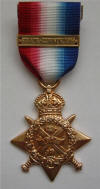 |
The 1914/15 Trio::
|
|
|
Shown here are the 1914/15 Star, British War Medal and Victory Medal of
Gunner 1597 Charles George Thomas
Barnes. Enlisting in Worthing on the 29th August 1914, Gunner C.G.T.
Barnes served in India and Iraq before being discharged due to "in
consequence of surplus to military requirements, having suffered
impairment since entry into the service paragraph 392 (XVIa) Kings
Regulations after serving five years, 105 days in the Colours and nil
years and days in the Territorial Force". His medals, being in the safe
keeping of his nephew Colin were presented to myself by Colin on the
occasion of our attendance of the 90th Anniversary of the Armistice at
Thiepval 2008.
|
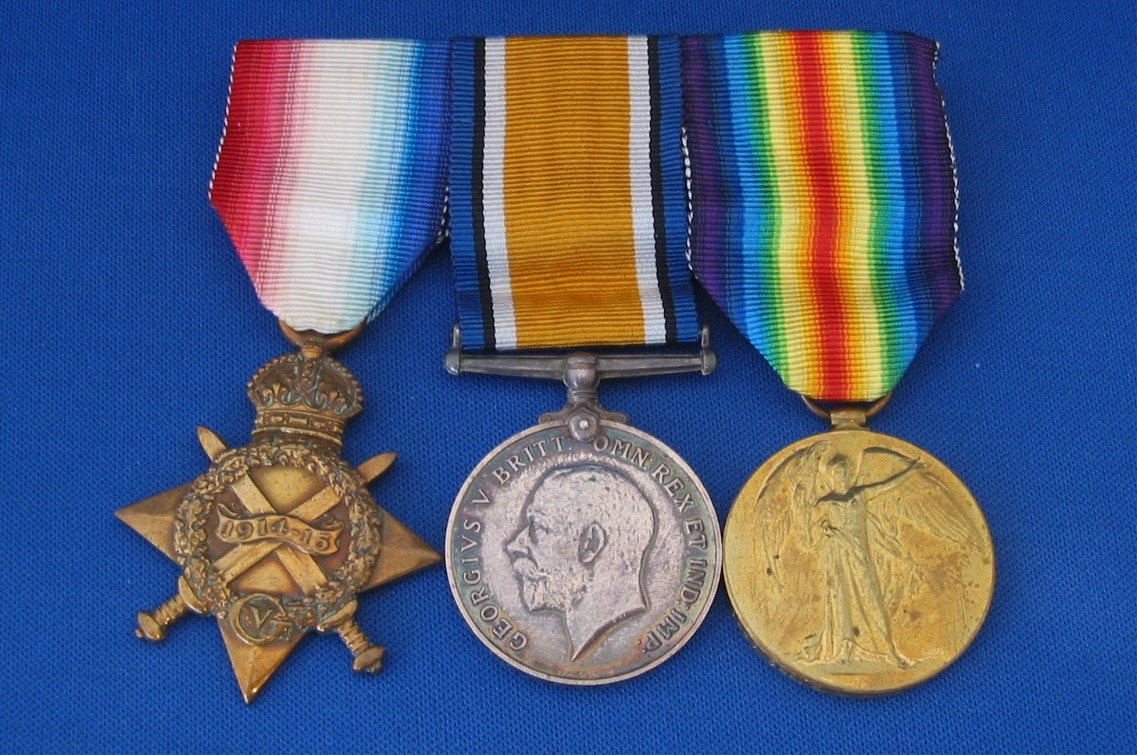 |
Territorial Force Medal::
|
|
|
The Territorial Force
War Medal 1914-1919 was authorised by Army Order
143 and awarded to members
of the Territorial Force and the
Territorial Nursing Service who had
volunteered for overseas service no later
than 30th September 1914 (i.e. signed Army
Form E624) - but to qualify for the medal they had either to be
serving with the Territorial Force prior to
the 4th of August 1914 or have had not less
than four years service with the Territorial
Force prior to that date and have rejoined
the force and volunteered for overseas
service prior to September 30th. Additionally, they must not have been eligible for
either the 1914 or 1914-15 Star and they
must have had eligibility for the British
War Medal (but not necessarily the Victory
Medal). Therefore you wouldn't see a 1914 or
1914/15 Star trio with the Territorial Force
Medal. Approximately 34,000 were issued.
The Territorial Force was renamed the
Territorial Army in 1921. The Territorial
Force Medal is valued between £150 and £600. |
 |
Imperial Service Badge::
|
|
The Imperial Service badge was issued to those members of the
Territorial Force that had volunteered for service overseas. Click on
the image for more information.
|
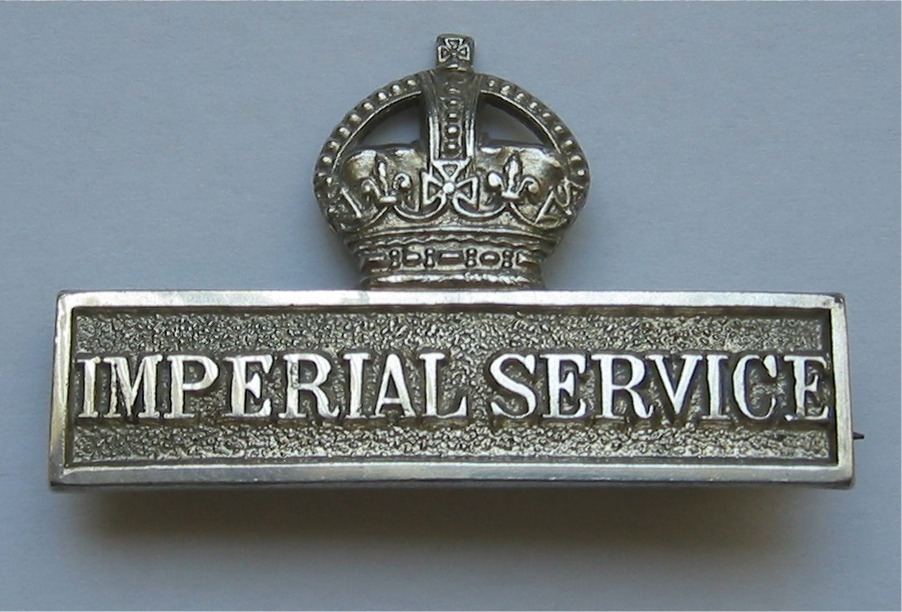 |
National Reserve::
|
|
|
The National Reserve was created prior to 1914 and was, in essence, a register
maintained by Territorial Force County Associations of all those who had
military experience, but who had no other reserve obligation. Click on the image
for more information.
|
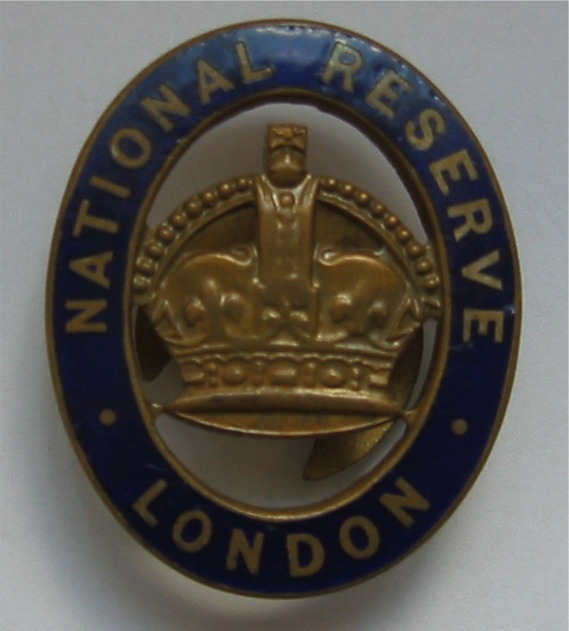 |
Silver War Badge::
|
|
|
The Silver War Badge,
instituted in September 1916 and sometimes wrongly called the Silver
Wound Badge was issued to soldiers who had been honourable discharged
under Kings Regulations 392; xvi. No longer physically fit for war
service or xvia. Surplus to military requirements (having
suffered impairment since entry into the service). This may
have been due to wounds received or illness contracted while on active
service. Each badge is uniquely numbered on the reverse and has the words "For King and
Empire" and "Services Rendered" around the rim. In the centre is a
voided cipher of King George V and Crown. On the back is a
vertical pin. The badge is not hall marked. Click on the image for
more information. |
 |
The Official "On War Service" Badges::
|
|
|
"On War Service" badges were issued to those workers engaged on
essential war work and many unofficial badges were issued by companies
until the first official badge "The Admiralty War Service Badge"
was issued to workmen who were indispensable for the construction of HM
Ships and Armaments in late 1914. The other badges were the “1915” War Office
(Ministry of Munitions) issue (two types), and the “1916” War Office (Ministry of Munitions)
issue which was for female workers. Click on the image for
more information.
|
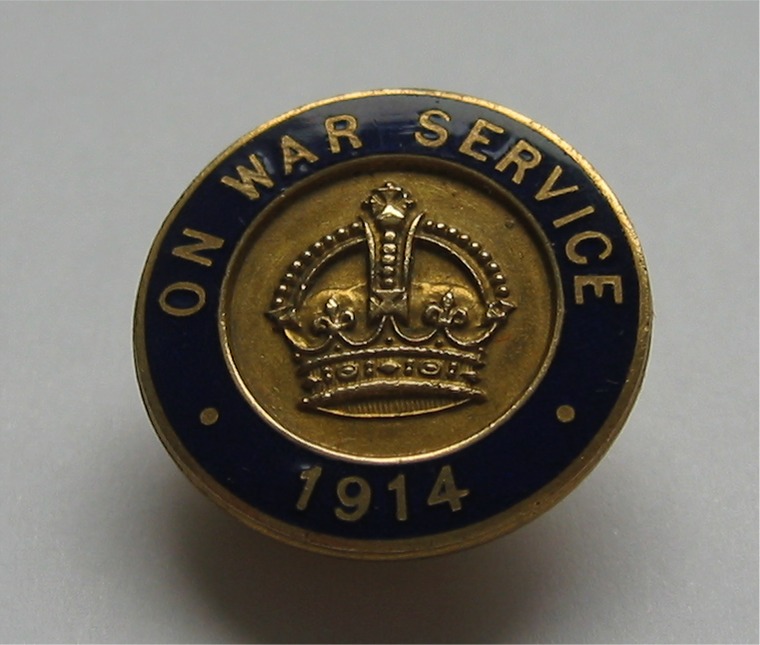 |
The Wound Stripe::
|
|
|
A wound stripe was awarded to Allied soldiers who had been wounded in
combat. It was worn by British soldiers on the left sleeve of their
uniform, the lower end of the stripe being three inches from the end of
the sleeve. The wound stripe was introduced in July 1916 and was a
vertical bar of gold "Russia braid" about 3mm wide and 50mm long.
|
|
National Savings::
|
|
|
In 1915-1916, the National Savings movement was created to encourage
Britons to lend the government their savings to help pay for the war.
The movement fulfilled two purposes; to channel the public's money into
funding the war effort and encourage the public to put spare cash into
the fund rather than spending it on scarce items. There was something
very interesting about the National Savings Movement -
click here to discover what
it was ! |
CLICK HERE |
The German Wound Badge::
|
|
| The German Wound Badge was equivalent to the
British "Wound Stripe". It was first established
on the 3rd March 1918 by Kaiser Wilhelm II and was the first German
Military Wound Badge (Verwundetenzbzeichen). There were three grades of
wound badge; black, silver and gold. On June 3rd, 1918, the Bavarian War
Ministry declared that the Wound Badge was an “award” not a “decoration”
and on June 24th the Kaiser introduced the Naval Wound Badge, which was
to be awarded in the same grades as the Army and under the same
regulations. For more information about the German Wound Badge click
here or on the picture. |
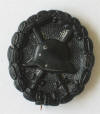 |
German 1st World War Veterans Badge::
|
|
The stick-pin shown in the photograph (click on the
photograph for a larger image and more information) is either a 1st
World War Veteran's pin issued during World War II or a World War II
Third Reich Veteran's Association stick pin.
There are other stick-pins which are similar in design and size. Some
indicate membership of the SA, SS or the Nationalsozialistische Deutsche
Arbeiterpartei (NSDAP).
How or when it came into the family's possession is not known. |
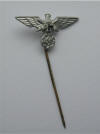 |
 |
|








